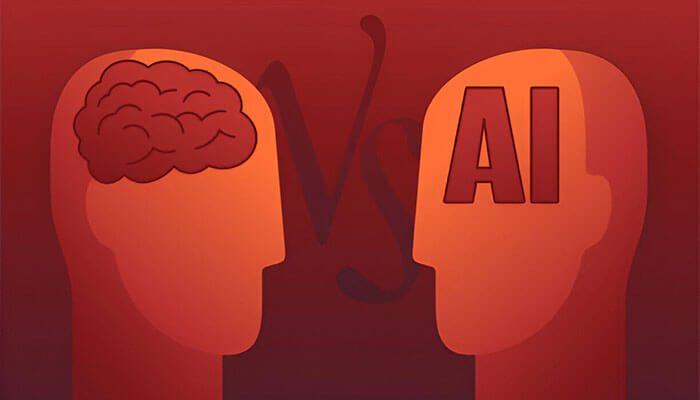Reinforcement Learning from Human Feedback ( RLHF ) is a major area within the broader field of artificial intelligence (AI), concerned mostly with how to train AI models so that they behave more as people might want them. Beyond these practical applications, the ultimate aspiration of RLHF is to narrow down human optimization objectives with learning machines so that user feedback can contribute as a demonstration signal in the machine’s closed-loop learning process. This approach is gaining traction since it can help deliver more than just efficient AI models that are also robust, ethically aligned, and have human intentions.
The Basics of Reinforcement Learning
Reinforcement Learning (RL) is about machine learning to take action in an environment to maximize some notion of cumulative reward. At a high level, Reinforcement Learning (RL) amounts to the following fundamental components:
- Agent: This is the person who should make decisions or learn something.
- Environment: The environment is an external entity to which the agent must relate.
- State: Specifically, conditions (or the current situation) of an agent in your environment.
- Action: The complete set of moves the agent can perform.
- Reward: The feedback is received by the agent from the environment after taking an action.
An agent learns a policy – which is the mapping from states to actions – to maximize its cumulative reward over time.
The Role of Human Feedback in RLHF
In traditional Reinforcement Learning (RL), a reward is given by certain mathematical functions or defined rules in advance. But this is harder, particularly for tasks that need complicated forms of human judgment. That is where the Reinforcement Learning from Human Feedback (RLHF) shines. These are used to approximate the Optimal Policy or Reward function non-linearly in terms of human feedback, in such a way that it assists the Reinforcement Learning (RL), algorithm to shape its reward function more efficiently through the learning process Reinforcement Learning from Human Feedback (RLHF). This feedback may come in the form of demonstrations, preferences, or evaluative comments.

Methods of Incorporating Human Feedback
The obvious approach could be to expose human feedback as part of the Reinforcement Learning (RL), process by following these steps:
- Human Demonstrations: As the name suggests, human experts engage in executing the task, and as well as agents observe how they perform. They consist of demonstrations that encapsulate examples of what desirable behavior looks like, which the agent then learns a policy on. This is where techniques like imitation learning come in, which train the agent to mimic the actions of a human demonstrator.
- Preference-Based Learning: Preference-Based Learning Instead of demonstrating actual demonstrations, humans might just provide preferences between different outcomes. e.g. a human might tell you which of two scenarios they prefer, given the input the agent then learns a reward function to model these preferences as human values.
- Evaluative Feedback: We can provide rewards or penalties to the agent (passenger), based on his action, through evaluative feedback by humans. By leveraging the feedback to test the reward function and tune the agent’s policy.
Implementing RLHF
Reinforcement Learning from Human Feedback (RLHF) consists of several steps, and they can be adapted depending on the application to implement it and the feedback strategy.
- Human Feedback Loop: Gather feedback from human experts or users. The interaction can either be through human-computer or observation, or surveys.
- Designing the Reward Function: This feedback is then utilized to construct a reward function that models human preferences. which could use machine learning approaches i.e., reward modeling to learn the reward from the feedback data.
- Train the Agent: Train the Reinforcement Learning (RL) agent with above defined reward function. This generally includes a policy loop where the agent is trained repeatedly and new feedback shapes updates to its current policy.
- Evaluation and Refinement: Report back on the agent’s performance, refining the reward function if appropriate. This step is very important in getting the agent to act according to human values and wishes.
Also Read: Document Management System (DMS): The Complete Guide
Applications of Reinforcement Learning from Human Feedback (RLHF)
It has been brought to bear in numerous sectors: The range of its use reflects well with the case.
- Robotics: Finally, Reinforcement Learning from Human Feedback (RLHF) can be used in robotics to teach robots high-level skills through human demonstrations and feedback. For instance, a robot can learn to help with house chores by observing examples and receiving feedback from humans.
- NLP: In NLP RLHF can be utilized to achieve higher language models. With the help of human preferences and feedback, these models can produce higher-quality predictions for various end tasks such as translation, summarization, question-and-answer solving, or conversation in general.
- Self-driving cars and drones: Reinforcement Learning from Human Feedback (RLHF) for saving & ethical decision-making. This can be within the framework of policies where human insight helps to prioritize safety and adherence to societal norms by having feedback on the optimization mechanism.
- Healthcare: wherein RLHF can help in making individual medical treatment plans by combining feedback from Medical professionals and victims. This potentially means better and more patient-centered care.
The challenges and the future sections.
The potential of Reinforcement Learning from Human Feedback (RLHF) as a sustainable tool is offset by the challenges it faces, below:
Scalability: Gathering consensus from people can be a slow and expensive process to do on large-scale applications. Scalable processes for collecting and integrating feedback are vital.
Quality of Feedback: Reinforcement Learning from Human Feedback (RLHF) trades off effectiveness for feedback quality. Biased feedback or even no consistent feedback can result in fewer policies. Reliable feedback is crucial, as well as representation requirements.
Interpretability: For trust and transparency, it is essential to have an interpretability understanding of how the agent uses feedback in decision-making. Model and Method Interpretation is an important research topic.
Ethical Concerns: Reinforcement Learning from Human Feedback (RLHF) systems must be aligned with high ethical principles and are not further entrenching pernicious biases. This task further requires the reward provisioning functions and policies to be designed in a rigorous manner as well as regulating them constantly.
Conclusion
This is promising for aligning Artificial Intelligence (AI) systems with human values and preferences through Reinforcement Learning from Human Feedback. Reinforcement Learning from Human Feedback (RLHF) can create models that are not only functional but also ethical and trustworthy by utilizing human input in learning. Reinforcement Learning from Human Feedback (RLHF) stands to be a critical technology driver as the pace of research and advancements in a variety of areas accelerates further robotics, and Natural Language Processing/Online Learning (NLP/OL) models to autonomous systems across industries like healthcare. Future progress in Reinforcement Learning from Human Feedback (RLHF) is contingent on solving the challenges of scalability, feedback quality, interpretability, and ethics through new technology development and interdisciplinary collaboration.
Next Post: Verification and Validation: Building the Right Product Correctly




One thought on “How Reinforcement Learning from Human Feedback ( RLHF ) Works”
Comments are closed.